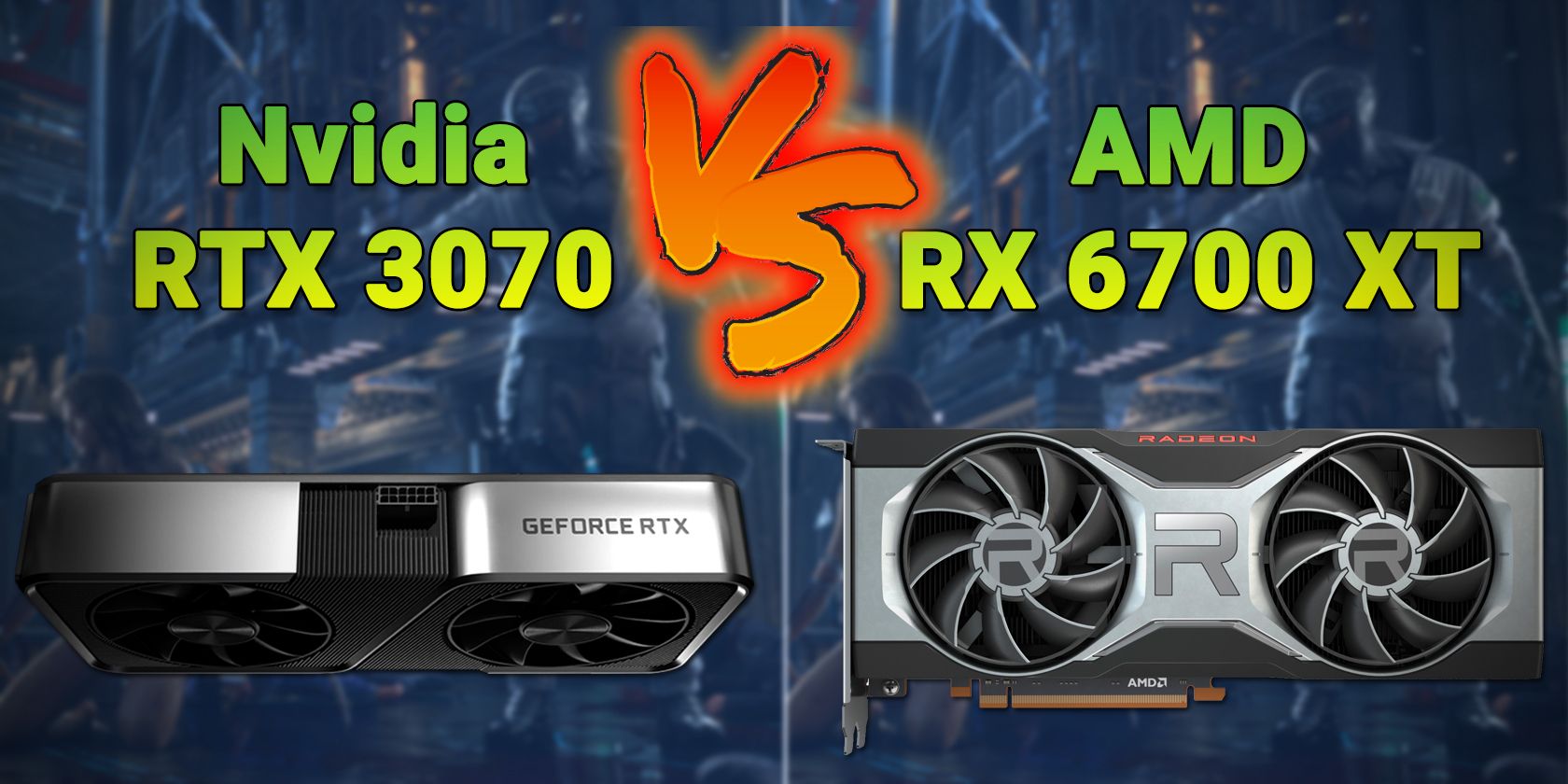Despite a raging chip shortage affecting global hardware production, AMD has launched yet another mid to high-end graphics card in the form of the RX 6700 XT. This GPU uses the same RDNA 2 architecture powering the latest consoles from Sony and Microsoft.
The RX 6700 XT’s closest competitor is Nvidia’s RTX 3070, priced just $20 higher.
On paper, the RX 6700 XT seems poised to eat into Nvidia’s pie. The reality, however, is more nuanced, with the manufacturers trading blows. So if you’re in the market for a GPU priced below $500, which one should you get?
Benchmarks: AMD 6700 XT vs. Nvidia RTX 3070
In benchmark testing, AMD’s shiny new RX 6700 XT is a mixed bag.
Compared to the RTX 3060 Ti, a GPU launched several months ago and substantially cheaper, the 6700 XT is only marginally better.
Nvidia’s RTX 3070, meanwhile, smokes the 6700 XT in almost every single game—with a performance delta of around 10 percent.
In games such as Wolfenstein Youngblood at 4K, the 3070 pulls ahead of the RX 6700 XT by a staggering 30 percent. Even the significantly cheaper 3060 Ti offers a performance advantage of 8 percent.
There are only a few games in which AMD’s 6700 XT manages to outperform both Nvidia’s cards—F1 2020, Assassin’s Creed: Odyssey, and Battlefield 5. Even within these games, though, changing the resolution between 1080p, 1440p, and 4K can swing the pendulum in either company’s favor.
AMD takes an even more significant battering in games that leverage the GPU’s dedicated ray-tracing prowess.
Since this is the first generation of AMD’s ray accelerator hardware, it suffers from many of the same poor optimization problems as Nvidia’s previous generation of GPUs (the RTX 2000 series).
Without an equivalent to Nvidia’s DLSS technology, AMD’s GPUs also struggle to deliver a playable experience at higher resolutions and even 1440p gameplay on occasion.
For instance, Watch Dogs Legion played at a Medium ray tracing preset brings the 6700 XT to its knees—with the GPU delivering a mere 31 FPS. However, the RTX 3070 delivers nearly double the frame rate of the 6700 XT, even when cranked up to Ultra ray-tracing settings.
For two products that cost about the same, this is a massive advantage for Nvidia’s offering.
Meanwhile, power draw benchmarks indicate that the performance per watt metric remains roughly the same between the 6700 XT and RTX 3070.
This is one area in which AMD could have outperformed the competition, since Nvidia’s RTX 3000 series is notoriously power-hungry. If you’re upgrading from a much older GPU, prepare for a power supply upgrade, too, regardless of whether you’re going team red or green.
Overall GPU Package: AMD Falls Short, Nvidia Delivers
There’s a lot more to a graphics card these days than simply raw compute horsepower. Nvidia exemplifies this perfectly with its vast library of features that are only available on its RTX GPUs.
The most noteworthy Nvidia-exclusive feature of this generation is Nvidia DLSS, which stands for deep learning supersampling.
Simply put, the technology leverages an Nvidia GPU’s tensor AI cores to upscale games to higher resolutions. The performance boost you can get from DLSS varies from game to game, but the visual fidelity is extremely high, almost rivaling native resolution rendering. So far, 18 games have DLSS support baked-in, but that list is constantly growing.
Other exclusive features include RTX Voice, Nvidia Reflex, G-Sync, and Broadcast. All of these leverage Nvidia’s dominance in the AI space.
If you’re a streamer, you may find yourself using many of these software tools daily. In fact, Nvidia’s video encoder NVENC also delivers far better stream quality at a fraction of the performance penalty as AMD’s VCE encoder.
To AMD’s credit, it offers a few exclusive features in Smart Access Memory and Radeon Boost. While the former attempts to speed up communication between the CPU and the graphics memory to improve performance in games, the latter allows the GPU to prioritize smoothness over visual fidelity dynamically.
However, they come with their own set of caveats, which makes using them situational at best.
Related: What Is AMD Smart Access Memory and Does It Make Gaming Better?
In the case of Smart Access Memory, you’ll need to pair the GPU with a fairly recent AMD Ryzen processor to enable the feature. Furthermore, only AMD’s Ryzen 5000 CPUs and 500-series of motherboards are currently supported. While the company will expand this list to include previous-gen processors, any CPU that’s a few years old will likely not be able to take advantage of this feature.
Radeon Boost, meanwhile, can be very useful on low-end hardware since it increases the smoothness of games when fast motion is detected.
The downside is that the feature is only supported by a handful of pre-validated games. In supported games such as Fortnite and Borderlands 3, AMD points to a significant (up to 50%) boost in FPS thanks to Radeon Boost.
AMD also says that it has a feature rivaling Nvidia’s DLSS in the works but has fallen short of providing a time frame for its release. Given the lackluster feature set and performance, it looks like Nvidia’s RTX 3070 offers a much more compelling and complete package.
Potential Price Cuts: Restoring Competition?
Unless you have no intention of streaming your gameplay or enabling raytraced features in games such as Cyberpunk 2077, AMD’s RX 6700 XT is simply the weaker candidate.
With the entire world suffering from a chip shortage, AMD may be counting on the fact that gamers will buy whatever they can. In that case, the RX 6700 XT is indeed better than not upgrading at all.
In the future, however, AMD may choose to revise the 6700 XT’s pricing. The company has done this on several occasions, most recently with last generation’s 5700 XT.
All else being equal, the Nvidia RTX 3060 Ti and RTX 3070 are both better picks for this GPU generation in the $400–500 price range.
Image Credit: Cyberpunk 2077/Official website, Nvidia/Official website, PCMag/Official website, AMD/Official website
About The Author

